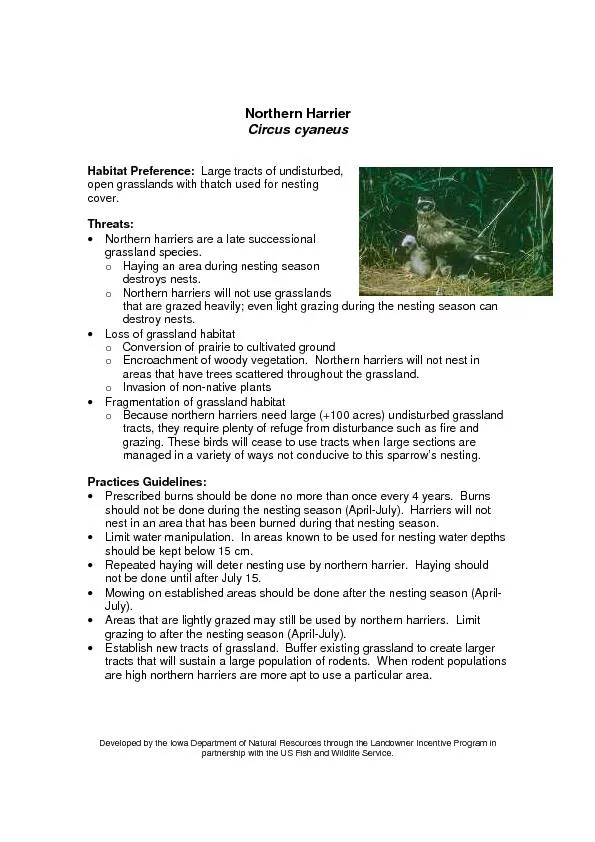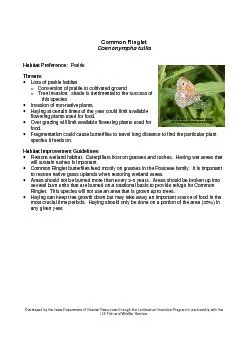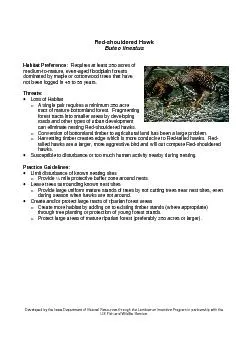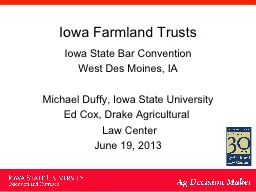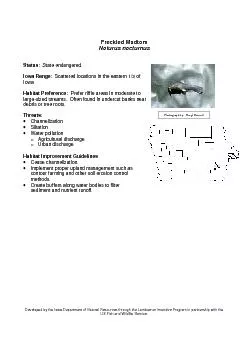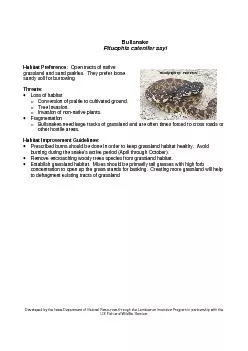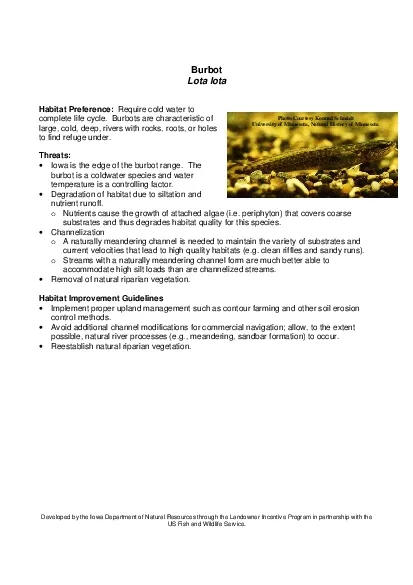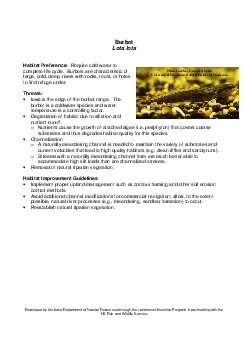PDF-Developed by the Iowa Department of Natural Resources through the Land
Author : alexa-scheidler | Published Date : 2016-04-22
Northern Harrier Circus cyaneus Habitat Preference Large tracts of undisturbed open grasslands with thatch used for nesting cover Threats Northern harriers are a
Presentation Embed Code
Download Presentation
Download Presentation The PPT/PDF document "Developed by the Iowa Department of Natu..." is the property of its rightful owner. Permission is granted to download and print the materials on this website for personal, non-commercial use only, and to display it on your personal computer provided you do not modify the materials and that you retain all copyright notices contained in the materials. By downloading content from our website, you accept the terms of this agreement.
Developed by the Iowa Department of Natural Resources through the Land: Transcript
Download Rules Of Document
"Developed by the Iowa Department of Natural Resources through the Land"The content belongs to its owner. You may download and print it for personal use, without modification, and keep all copyright notices. By downloading, you agree to these terms.
Related Documents

